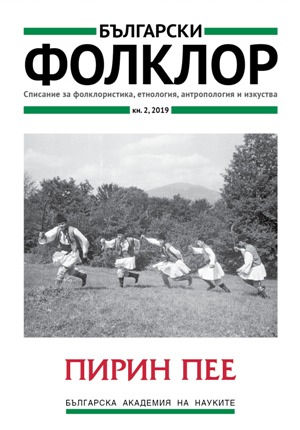
We kindly inform you that, as long as the subject affiliation of our 300.000+ articles is in progress, you might get unsufficient or no results on your third level or second level search. In this case, please broaden your search criteria.

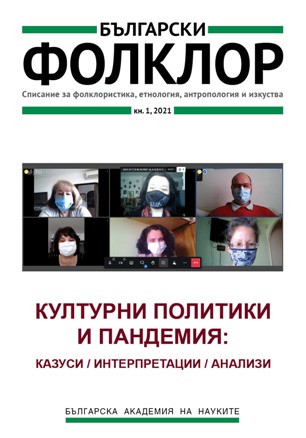
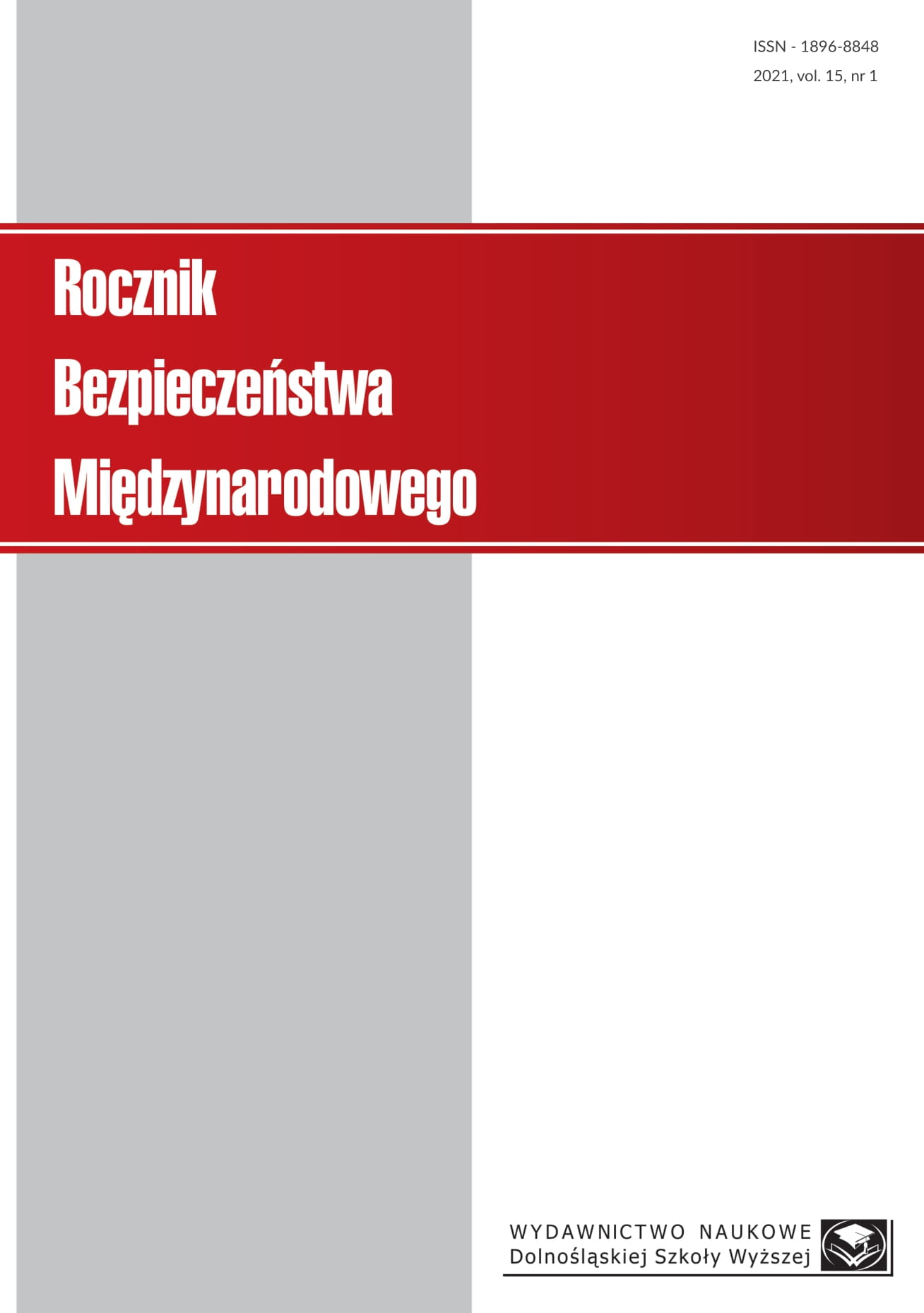
The article examines of evolution of Chinese security policy in the light of the white papers on defense. It hypothesized that the goal of the Chinese strategy is to ensure the security of the state, and not to maximize its power. The theory of neoclassical realism was adopted as the theoretical basis for the analysis. The distribution of power in the international system was adopted as the independent variable in the study, and the Chinese security policy as the dependent variable. China's Grand Strategy was recognized as an intervening variable. The study used elements of the qualitative method in line with the recommendations of the neoclassical realism program, emphasizing causal relationships in the process of evolution of China's strategy being followed. As a result of the research, the following conclusions were drawn: 1) China perceives security holistically; that is, it considers both internal and external security. A particularly important aspect is also security at the seas and in new domains: space, cyber and electromagnetic space; 2) The security threats to China are primarily of an internal nature, and the most important threat is the possible declaration of independence by Taiwan. 3) The armed forces are the most important means of countering potential threats. The Chinese strategy assumes the future conflict as a people's war, consisting of the total mobilization of the nation's and state's resources. The army’s main task is to win information wars; 4) The most important supporting objective in China's security strategy is to protect China's "overseas interests"; 5) The security strategy is evolving, and its scope grows with the growth of China's global interests. The Chinese plan goes far beyond the primary goal of ensuring the security of the state. It is therefore also expansive.
More...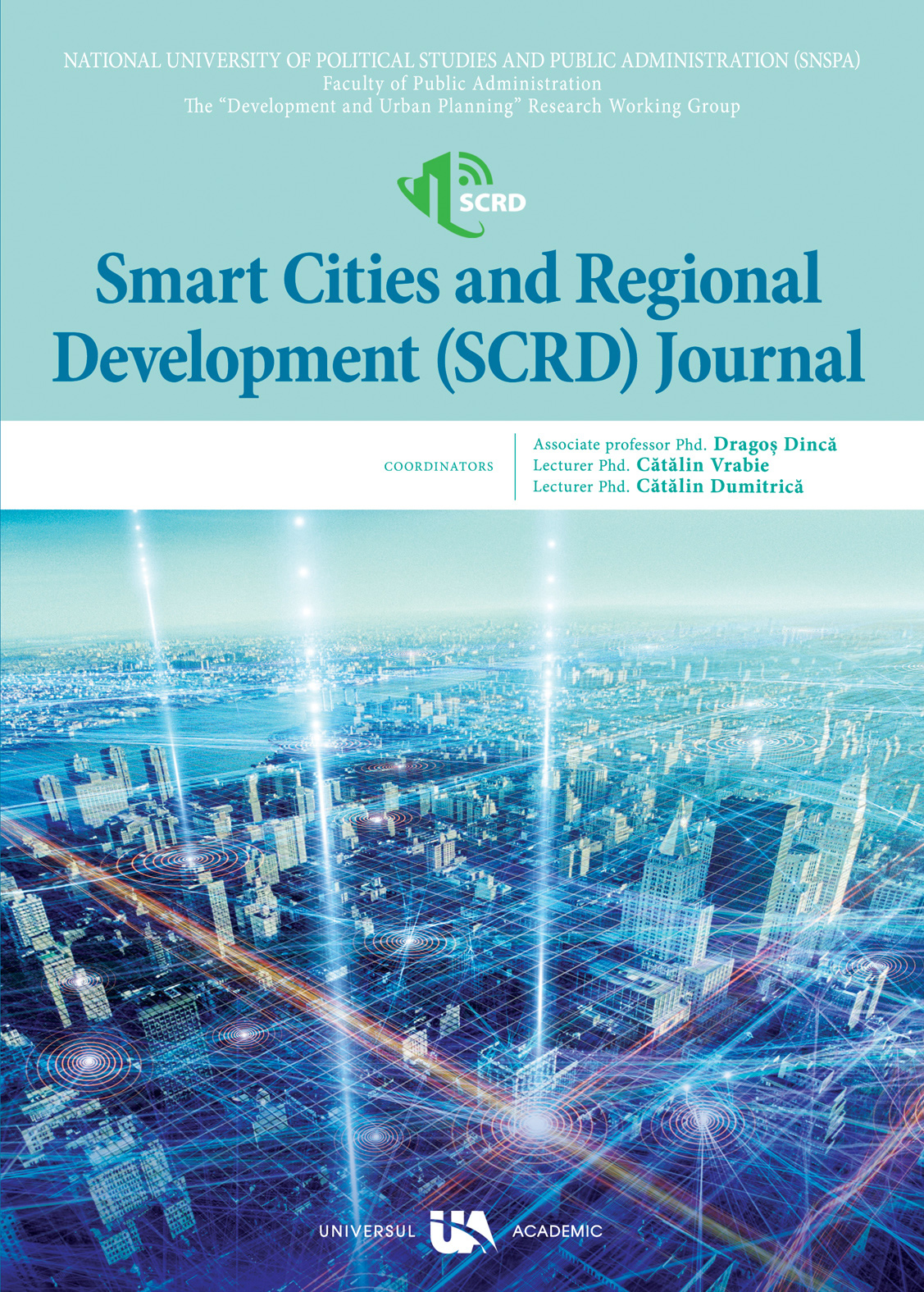
In recent years, there have been efforts carried out by international organisations, like the OECD or the EU, to push for smart cities to take inclusion as one of their core pillars. This raises the question of a newly discussed concept: participative (or participation) smart cities. More specifically, it raises the question of whether such a setting or program is feasible , and how passive participants can be transformed into active stakeholder. Hence, the objective of this article is to investigate whether participative smart cities exist in 2021 and what drives their success. In order to answer the research question, this article intends to assess the level of citizen participation in a sample of selected smart cities. Based on existing knowledge, a framework listing the most common citizen participative practices, and with the help of a case design of each selected cities, we establish how participative smart cities are feasible and whether there are institutional and political characteristics that make them differ from smart cities that lack participative processes. We find that institutional determinants are key for cities willing to establish participative platforms involving citizens in the city management processes. The article concludes that if smart cities want to follow international organisations recommendations to make cities more inclusive and participatory, institutional reforms must be conducted.
More...
Urban lifestyle, stressful work, a large number of daily obligations significantly affect the occurrence of stress. If stress reduction is not addressed, adverse effects on human health may occur. This paper proposes a model of smart healthcare service based on the Internet of Things. The main goal is to develop an IoT system that will enable real time monitoring of citizens’ stress in a smart city, during their everyday lives. Users of this system can monitor stress level and receive notifications and recommendation how to low down stress via their mobile phones. Depending of the detected stress level, users of the proposed system can be provided with relaxation materials in the form of short relaxing video or audio contents. After the stress level is normalized, the user receives a notification and can continue with normal activities. Unlike well-known solutions for stress management, this solution is wearable and can provide biofeedback to both, users and therapist or healthcare workers. The proposed IoT system is developed using intelligent devices such as mobile phones, Raspberry Pi microcomputer, Arduino microcontroller, and sensors for monitoring heart rate and skin conductivity. As a support for monitoring stress level a responsive web application is developed. All the measured data are stored in the cloud. Based on obtained and analyzed data, users can manage the stress level and prevent disease. The obtained results could serve as a good basis for adoption and implementation of stress management as a smart city service.
More...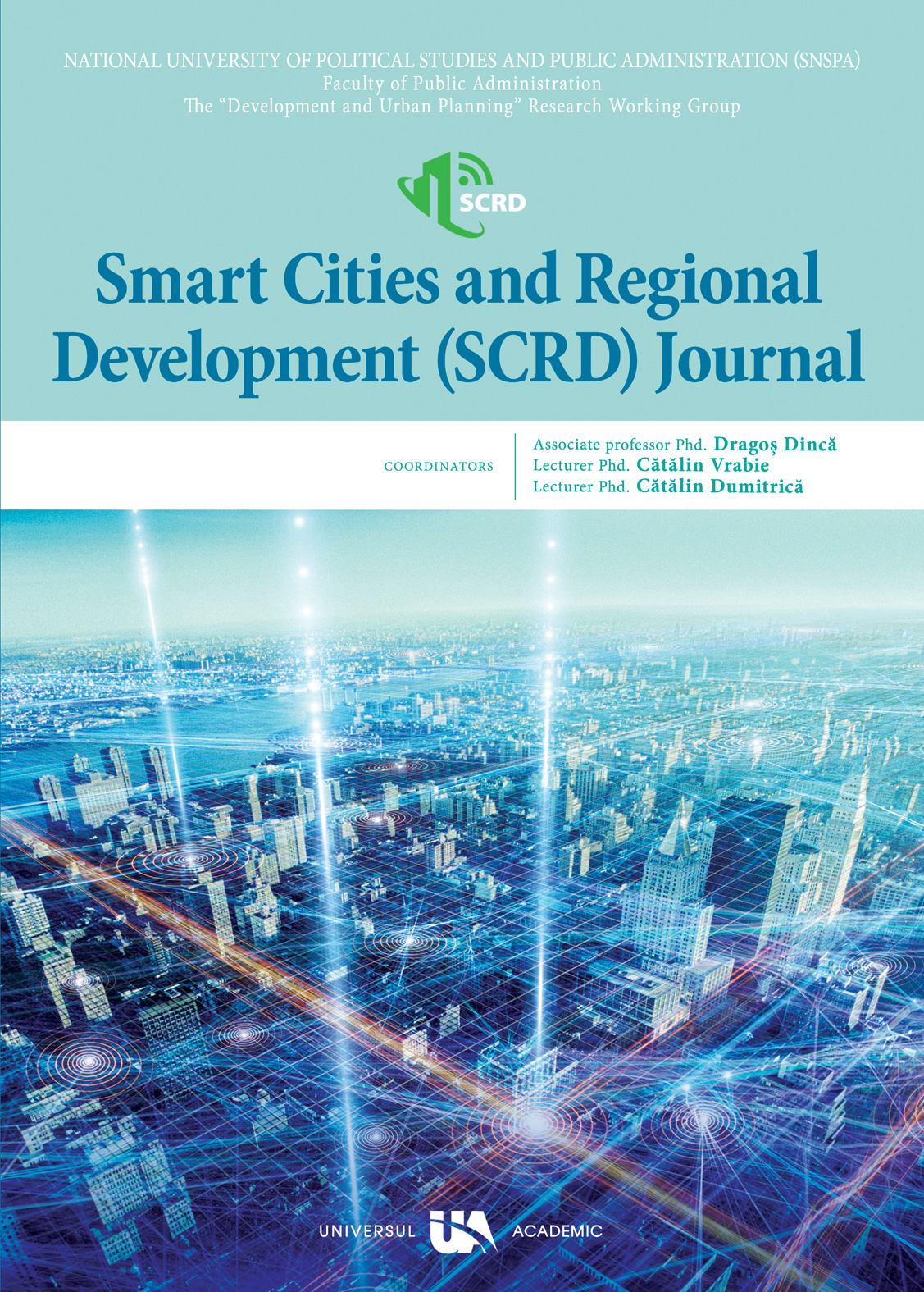
The digital revolution is an issue for local authorities to actively shape the dynamic change of service expectations.The Objectives of the research project are investigations in how AI-support can speed up decisions of authorities in unknown, dynamically changing situations professionally. The scientific interest lies in the question of possible linking options between learning theories of adult human education and deep learning strategies of machine learning approaches. The Prior work serves the element of service optimization for citizens or business concerning the use of AI-applications for direct interaction and for process optimization in the background of processing.The Approach is in addition to an introduction to the basic user scenarios of AI technology in the public task spectrum of local governance. In this respect, it bases on the empirical findings of the study ‘Artificial Intelligence in Public Administration - Fields of Application and Scenarios”.The Results concern the understanding that human and AI-basic technologies are action-oriented learning systems performing in the fields of creating services in the web 4.0, such as the internet of things. Development learning theories, such as transformative learning for Data Scientists and Public Managers, should have an impact on more customer related AI-applications.The Implications of this interdisciplinary projekt should give an impact to academics in the public management and data sciences as well as specialists of learning in the field of human and machine-interaction. For practioners and leaders of local authorities, the possibilities of implementing AI-services should become clear.The Value of the paper lies in the combination of administrative, learn-strategic, technological, and ethical requirements to be proposed in order to get the application scenarios of AI off the ground, also in the sense of acceptance management in the face of persistent innovation blockades of general ‘smart government’ measures.
More...
knowledge. Today this process is driven by the new information and communications technologies. While digitisation is permeating all areas of life, it has become clear that technological revolution is not just a purely technical (or economic) process, but also a social one and it is not gender-neutral. Technology can help women and girls access new opportunities, means of expression and channels for participation. However, technological boom can also cause imbalances in the convergent environment. People will need a variety of skills to be able to contribute on an equal footing to the digital transformations but these skills are not equally distributed across all social groups. Debates nowadays extend even further to encompass artificial intelligence and experts have repeatedly underlined that advanced automation technologies can bring about not only great opportunities for humanity but also risks. Challenges can stem from the accelerated use of artificial intelligence without respecting such categories like gender, ethnic and socioeconomic diversity. International bodies raise the admonition that “transparency and accountability for the data behind AI is critical to reducing bias, but very difficult to govern or enforce.” The 2030 Agenda for Sustainable Development and its 17 Sustainable Development Goals (SDGs) [1] embody a human rights’ based roadmap for progress that is sustainable and leaves no one behind. Achieving gender equality and women’s empowerment is a crucial goal among others in this important set of priorities for humanity. Only by ensuring the rights of women and girls across all the goals will we get thriving economies, a sustaining environment now and for future generations and genuine social inclusion for a smart society. The article will present a new elaborated version of the summary of the research on gender issues in the converged environment done in the period 2018 – 2020 within the EC COMPACT project.
More...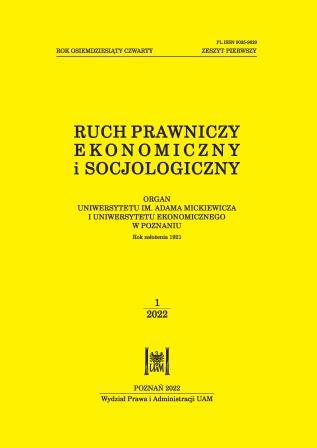
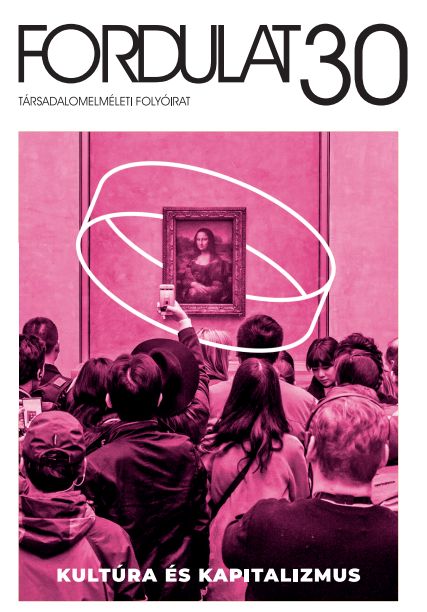
Our study demonstrates that the analysis of culture should be embedded into the history of capitalism. Through this understanding of culture's materiality, we highlight that culture is not only a spiritual but also a materially embedded phenomenon. We argue that this analysis is also essential to outline culture's role in a post-capitalist world.Our study offers four perspectives to analyze the diverse, often indirect, relationship between culture and capitalism. We show how the diversity of culture is more than heterogeneity but rather part of class conflicts and struggles. By examining the cultural institutions, our paper points out that they play a crucial role in the reproduction of the laborforce. It also points out that global and nation-state-led cultural production are not contradictory but entangled phenomena. Finally, our paper emphasizes that the relationship between culture and capitalism cannot be understood as abstract laws but must also always consider the social trajectories of professional cultural producers, who are a central but often invisible dark matter.
More...
The article examines China’s geo-economic interest in Africa. China intends to exercise its leverage over both coastal frontiers for trade and defense and its hinterland for rich mineral, metal, and fossil deposits. Furthermore, the debt trap seems to be one of the methods through which China intended to bargain with Africa to bag as much advantage as it could gain. The question that emerges from this critical engagement with China-Africa relations is to look into how the reality of Africa’s narrative of development is projected both from outside and within and the contradiction embodied in that projection. China used the narrative of development to set its feet on African soil. This paper discusses China’s penetration into Africa by offering interest-free loans and its gradual emergence as a neocolonial power through expanding its network. The method used in the study to establish China’s monopoly and interfering streak in African affairs through BRI is the analysis of available data based on which the objectives and the conclusions are drawn.
More...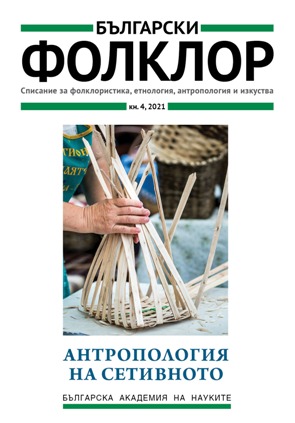
The aim of the article is to outline and analyse the relationship between fashion and cultural heritage as a source of inspiration for fashion designers. Several examples of French fashion houses are considered, and fashion as art is discussed. In the highly competitive context of modern global fashion and luxury industry, creative practices and processes can be viewed in direct connection with cultural heritage. The interaction between cultural heritage and the creative process is strategic. It works at all levels and includes all components of the production chain, integrating the creation, design, production, and communication. Fashion designers, along with their aesthetic canons, rediscover archetypes, values and imagination, but rethink them in an appropriate, concrete and creative way. The designers offer new visions and meanings, as they experience original processes and approaches. Furthermore, they introduce social, political and cultural issues into the design philosophy, apply new craft skills in the design process or even utilize music and youth culture into the heritage of brands. In this way, cultural heritage is rediscovered as a modern and contemporary design.
More...
Small and medium-sized enterprises (SMEs) are now unquestionable contributors to economic development on the one side and employment creation on the other. To promote sustained growth, SMEs must meet specific prerequisites, particularly the leadership structures of this segment. Therefore, this research aims to investigate and identify the determinants that affect SMEs performance. The research employs a qualitative technique, using questionnaires containing 52 questions. The study surveyed 336 SMEs owners or managers from March to April 2022. The Multinomial Logistic Regression (MLR) empirical technique explored the influence of education level, previous experience, training attendance, business plan, consultation services, and employees' insufficient competency in SMEs performance. The research has revealed that the level of education and consultancy services positively impact SMEs performance. In contrast, neglect of training and employees' insufficient competence harm SMEs performance. The study encourages SMEs owners and managers to take advantage of professional training opportunities and to invest in existing personnel through training to acquire acceptable competence, which will be reflected in management performance. From the perspective of the contribution, it provides the most recent evidence in the context of Kosovo's economy, employing the logistic regression analysis.
More...
The research answered whether cooperation in ruling corporate taxation, a traditional obligation of conduct of sovereign states, was undergoing profound transformation into the obligation of result. The analyzed topic was not whether the tax authorities want or should cooperate (which is answered per se), but rather how to appropriately respond to the international taxation requirements for strengthening the multilateral agreements. Tax authorities worldwide have expressed concerns about identifying efficient regulation, and the development of multilateral agreements to combat tax evasion was under long and often unproductive negotiation. The empirical analyses of relevant literature and jurisprudence helped formulate an opinion on the regulation’s efficiency in strengthening multilateral taxation. The need to change the nature of the state’s obligation to negotiate fiscal regulation was not mentioned explicitly in hard law. Still, it was indirectly supported by soft law instruments, such as state representatives’ continuous yet divergent dialogue and the approaches presented in the international courts’ jurisprudence. The consistent influence on the obligation to support developments in international law in corporate taxation was justified, given the limit when considering its conduct nature, compared to potential benefits generated by the obligation of result.
More...
The purpose of this study was to investigate the effect of corruption on Foreign Direct Investment (FDI) in the Western Balkans countries, including Bosnia and Herzegovina, Croatia, Kosovo, Montenegro, North Macedonia, Serbia, and Albania. Secondary data from The World Bank, Transparency International, and International Monetary Fund databases were utilized to complete this study for 2012-2020. The built model of multiple linear regression included four independent variables, namely: Corruption Perception Index (CPI), Western Balkan Corruption Ranking (WBCR), Exchange Rate (EXG), and Inflation Rate (INFL), as well as FDI as a dependent variable, and data effects were analyzed through the SPPS scientific research software program. The results found that if CPI and WBCR were to increase by one unit, FDI would decrease by 0.088, namely 0.624, while if EXG and INFL were to increase by one unit, FDI would increase by 0.165, namely 0.236. In order to fight corruption and potentially attract more foreign direct investment, the governments of these countries should work to harmonize their anti-corruption laws with those of the European Union. In order to prevent the negative consequences of FDI inflows, they should also maintain a balanced rate of inflation, which entails stabilizing exchange rate fluctuations.
More...
Local self-governments (LSGs) cannot effectively manage emergencies. To overcome this problem, it is necessary to find action policies that would facilitate the increase of capacities of LSGs in such situations. The starting point for defining the policy was collecting data on the current abilities and capacities of LSGs in AP Vojvodina. The research covered 40% of the total number of LSGs and more than 64% of the population in the AP of Vojvodina. A combined open-ended survey questionnaire was constructed for data collection. The data was collected in field conditions through online procedures, direct sending of written surveys, and direct discussion of project implementation leaders. The statistical analysis of data identified that the legal aspect of LSGs and emergencies was not harmonized with other institutional documents at the level of LSGs. Most LSGs had serious difficulties in managing emergencies, especially civil protection. The platform is envisaged to facilitate raising the prevention capacity of LSGs by integrating all relevant information to provide early warnings and indications for implementing corresponding organizational, technical, and economic measures to deal with emergencies.
More...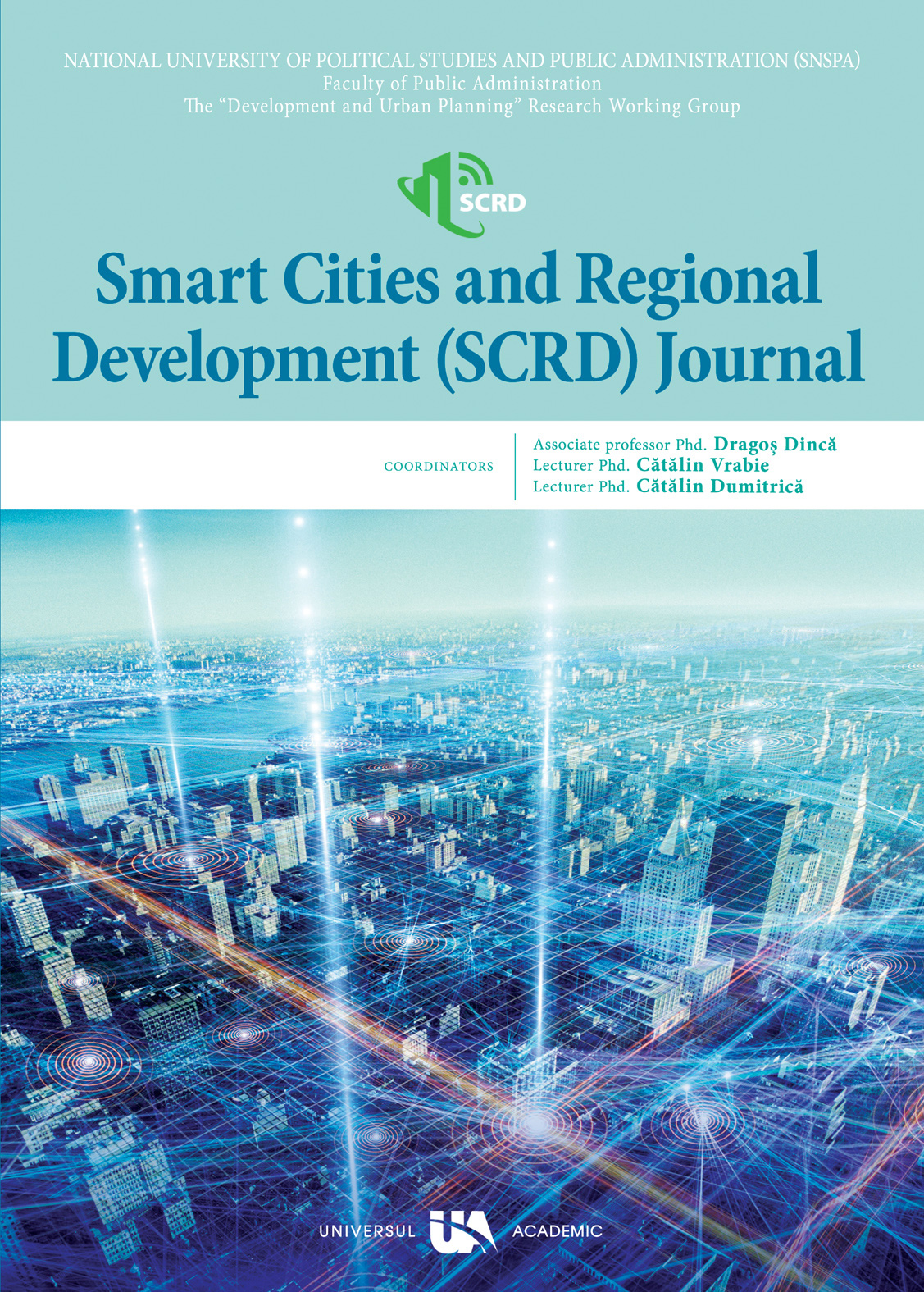
The paper analyzes the main aspects of ambient advertising, metaverse and smart cities. This type of advertising is creative, relatively inexpensive and uses the context of a city’s area to provide a new experience to its residents and tourists. The article aims at displaying the overlapping of this marketing communication with the urban context and how both companies and municipalities could benefit from using it. The types of ambient advertising are studied, as well as their application in the communication of organizations with people in cities. Through content analysis and case studies the connection between ambient advertising and metaverse urban areas with its residents is studied. This paper adds on several previous studies [1, 2, 3] and some others in the context of smart cities and metaverse ambient advertising, while proposing an additional method of tracking user experience – eye tracking. Key elements of ambient advertising, the metaverse and smart cities are studied, as well as interactivity and connectivity. Through the analyzed examples the positive aspect of using this marketing communication is displayed, since it makes it possible for the residents to see the same environment in a new and interactive way. Thus, the connection between them and the urban space becomes stronger and more entertaining. This paper could be of interest to academicians and practitioners in the sphere of marketing and advertising, as well as representatives of municipalities, who aim at providing their residents an additional level of experience with the urban areas of the future.
More...
The article traces the emergence of the smart city concept, and how it has developed in the global North and the global South. The article further explores the discourses around smart cities as found mentioned in the scholarship, and in several attempts to define a rather ambiguous term smart city, exploring different aspects/dimensions/components of a smart city in general, and in relation to citizenship and rights, in particular. The discourses are broadly categorized under the themes of urban governance, citizenship rights and technology-society nexus. An understanding of the genealogy of the smart city concept and discourse would be helpful in understanding how the idea has taken space in urban governance with implications including on citizenship rights.
More...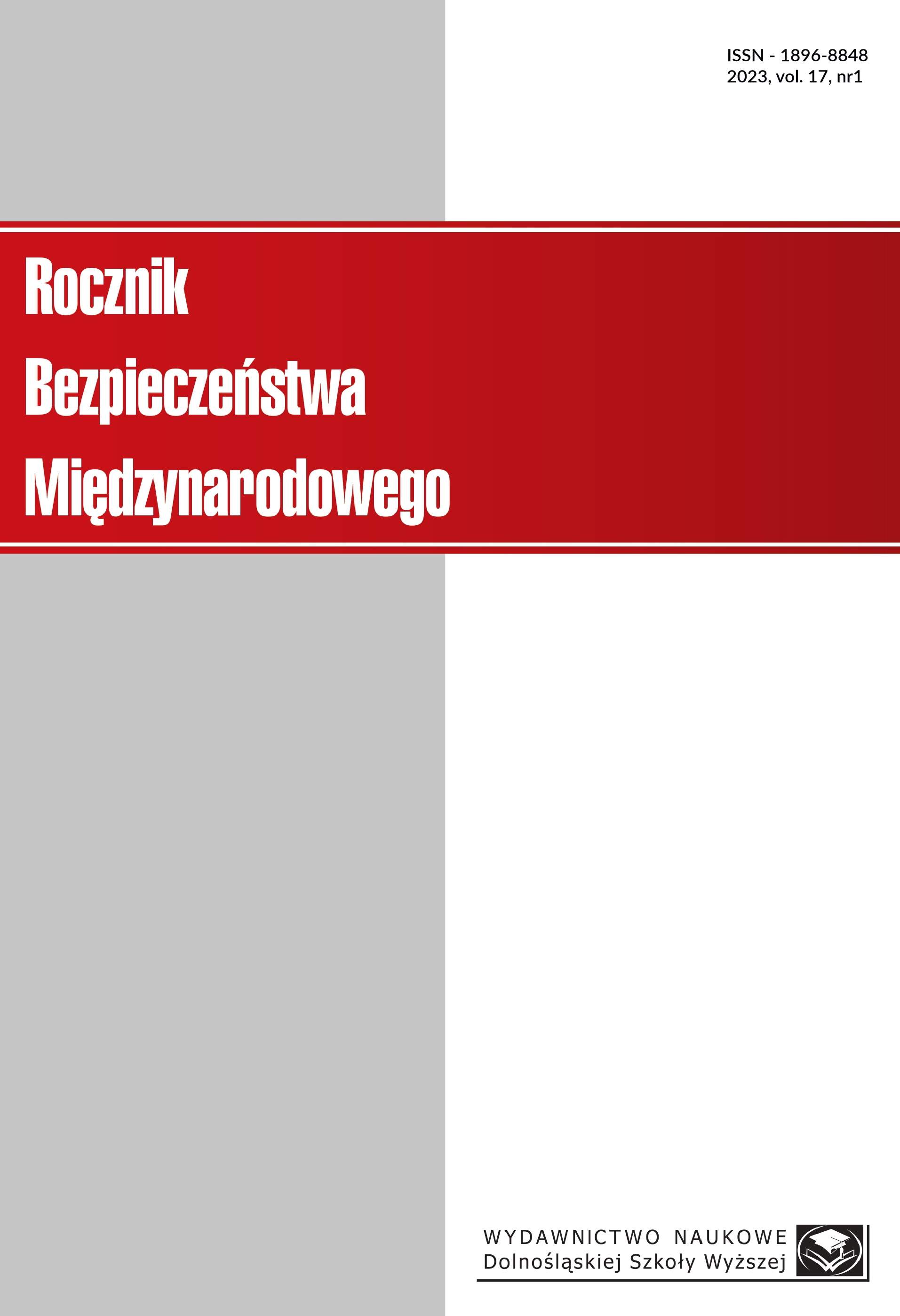
In many of the world's armed conflicts, the health sector has become a target of attacks, and the number of such attacks has increased significantly in recent years. The impact and consequences of armed conflict on health care are far-reaching and long-lasting. In addition to the direct casualties of armed conflict, indirect casualties remain significantly underestimated. The unstable situation as a result of armed conflict leads to the abandonment of preventive programs, the delay of diagnosis, or the abrupt interruption of the therapeutic process, which significantly reduces the prognosis of patients and leads to an increase in mortality. Mass migration, including the migration of patients, shortages of medicines and medical equipment, interrupted basic and clinical research, the mental strain on the population, or staff shortages, have a significant burden on the health sector. This article attempts to collect and describe the key problems faced by health systems affected by armed conflict, using examples in the context of the current war in Ukraine, among others. This paper aims to conduct an analytical study to develop recommendations for the health sector facing a humanitarian crisis. It describes the findings of a literature review regarding the impact of armed conflict on the health sector. The collected literature was the subject of critical analysis. The conclusions drawn were placed in the context of the current conflict in Ukraine.
More...
The late 1990s, when censorship was introduced in China, was a watershed moment for many Chinese companies. At that time, as many Western applications became banned in China, Chinese entrepreneurs began to develop their products at a much faster pace. An example is Tencent company which launched the WeChat application, which revolutionized the E-commerce market in China within just a few years. Chinese E-commerce differs from the Western Internet markets by the characteristics of consumer behavior, shopping platforms, or brands, which is a new co-creation model among consumers and brands. The given research paper presents a fragment of the results of own research conducted among the entrepreneurs and individuals who use the WeChat application for business or/and private purposes in China. The aim of the following study is to present the Chinese E-commerce market, and the difference between the Western and Chinese customer approaches in the example of the WeChat application. The research method used is a WeChat application case study in China. The source of the work is an analysis of the literature query in the field of E-commerce, analysis of the statistical data, and primary data, i.e., a fragment of the results of the pilot own research.
More...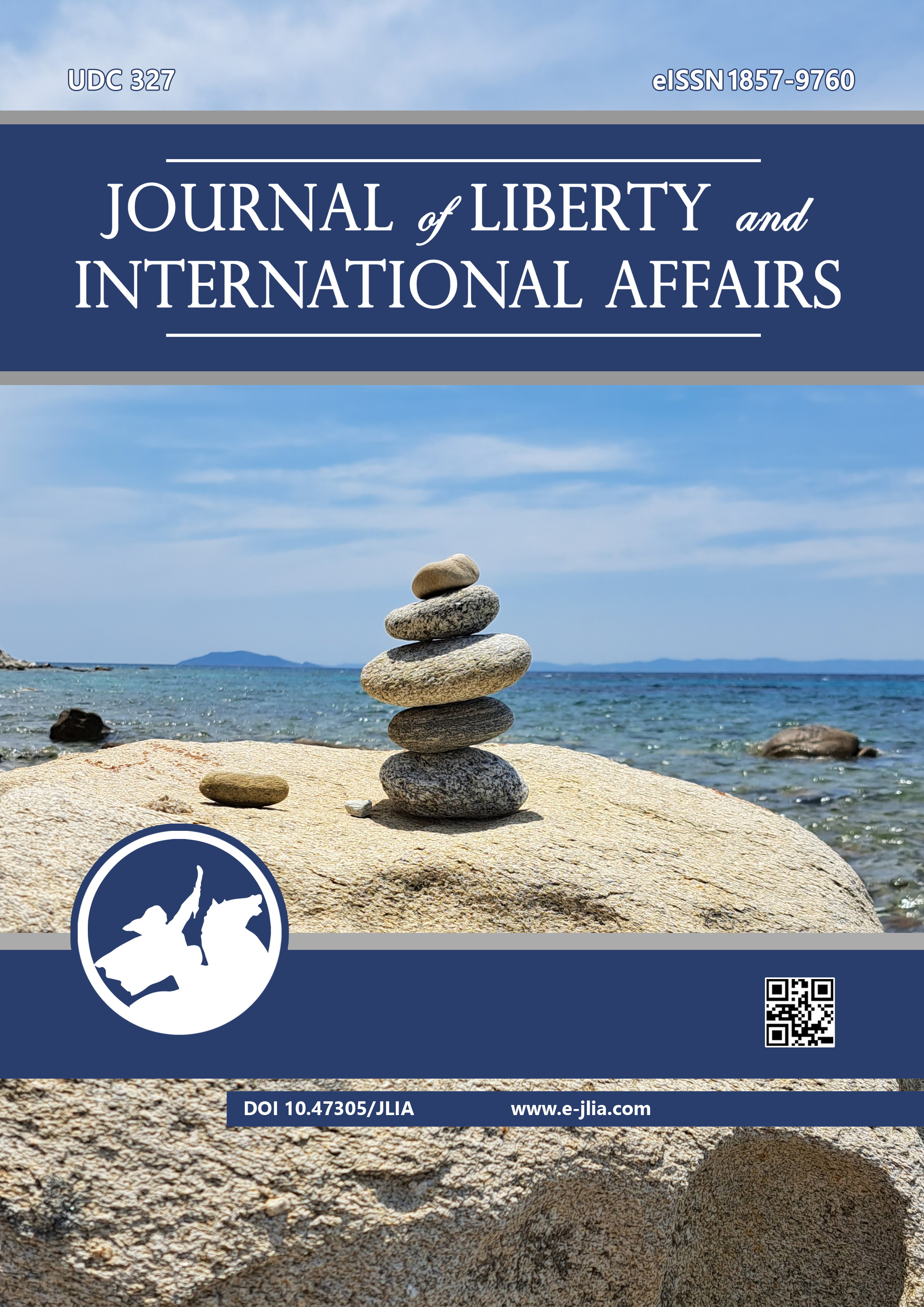
This research aimed to measure the impact of innovations (product innovation, technological innovation, marketing innovation, and process innovations) on the financial performance of exporting enterprises. It was based on return on assets (ROA), increase in return on sales, net profit, and increases in value per employee. The research was carried out based on primary data through the quantitative method. The study's participants were 150 Kosovo exporting companies selected randomly. Based on Pearson’s correlation analysis, it was found that there is a weak positive linear relationship between organizational innovations and product innovation, and financial performance. Additionally, a moderate positive linear relationship exists between marketing innovations, process innovations, and financial performance. Referring to the multiple linear regression, it was revealed that innovations explain 46.7% of financial performance. Process and marketing innovation had the greatest impact on financial performance, while organizational innovation had a lesser impact. The findings of this research contribute to improving the financial performance of exporting companies in Kosovo, focusing on the type of innovation that most influences performance.
More...